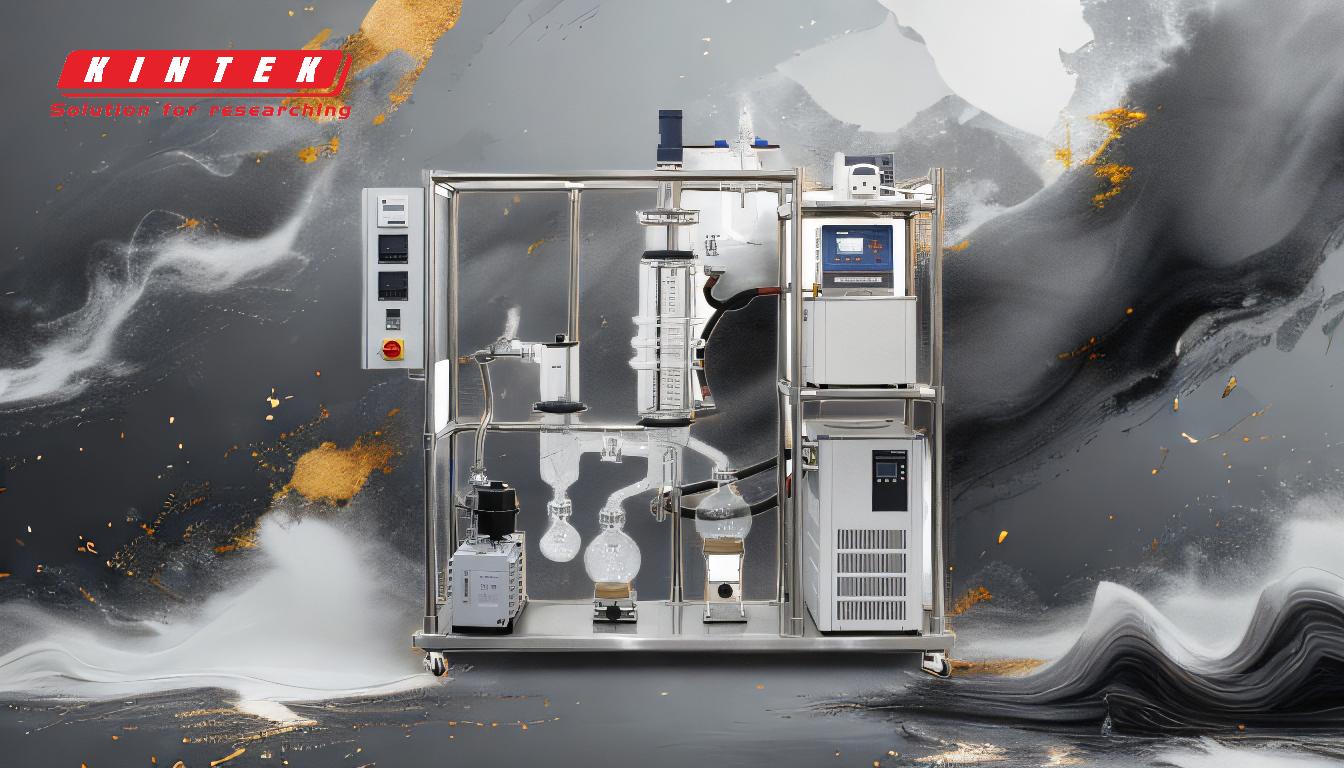Simple distillation, while a widely used technique for separating mixtures based on differences in boiling points, has several limitations that can affect its efficiency and applicability. These limitations include the tedious setup and cleaning process, small batch sizes, lack of continuous feed, and the potential degradation of heat-sensitive compounds due to the high temperatures required. These factors can make simple distillation less suitable for certain applications, particularly when dealing with delicate or sensitive materials.
Key Points Explained:

-
Tedious Setup and Cleaning Process:
- Explanation: Simple distillation requires a specific setup that includes a distillation flask, condenser, and receiving flask. This setup can be time-consuming to assemble and disassemble. Additionally, cleaning the apparatus after use can be labor-intensive, especially if the distilled substances leave residues or are difficult to remove.
- Implications: The time and effort required for setup and cleaning can reduce the overall efficiency of the distillation process, making it less practical for high-throughput or routine applications.
-
Small Batch Sizes:
- Explanation: Traditional simple distillation systems are often limited to small batch sizes. This is due to the physical constraints of the apparatus and the need to maintain precise control over the distillation conditions.
- Implications: Small batch sizes can be a significant limitation when large quantities of a substance need to be distilled. This can lead to increased labor and time costs, as multiple distillation runs may be required to process larger volumes.
-
Lack of Continuous Feed:
- Explanation: Simple distillation systems typically operate in batch mode, meaning that the entire mixture must be loaded into the distillation flask before the process begins. There is no mechanism for continuously feeding new material into the system during the distillation.
- Implications: The lack of continuous feed can limit the efficiency and scalability of the distillation process. Continuous distillation systems, which allow for the continuous addition of new material and removal of distillate, can be more efficient but are more complex and expensive to set up and operate.
-
Potential Degradation of Heat-Sensitive Compounds:
- Explanation: Simple distillation requires heating the mixture to its boiling point to separate the components. For heat-sensitive compounds, this high temperature can cause degradation or decomposition, leading to loss of product quality or yield.
- Implications: This limitation makes simple distillation unsuitable for certain delicate substances, such as some pharmaceuticals, essential oils, or other thermally labile compounds. Alternative methods, such as vacuum distillation, may be required to reduce the boiling point and minimize thermal degradation.
-
Inconsistencies Due to Small Size:
- Explanation: The small size of traditional simple distillation systems can lead to inconsistencies in the distillation process. Variations in temperature control, heating rate, and other factors can affect the purity and yield of the distillate.
- Implications: Inconsistencies can be problematic when high purity or reproducibility is required. Larger or more sophisticated distillation systems may be needed to achieve more consistent results.
-
Need for High Vacuum in Some Cases:
- Explanation: To mitigate the issue of thermal degradation, the distillation process can be modified to include a high vacuum. This reduces the boiling point of the components, allowing them to be distilled at lower temperatures and shorter exposure times.
- Implications: While effective, the use of high vacuum adds complexity and cost to the distillation process. It requires specialized equipment and careful control of vacuum levels, which may not be feasible for all applications.
In summary, while simple distillation is a valuable technique for many separation processes, its limitations—such as the tedious setup and cleaning, small batch sizes, lack of continuous feed, potential degradation of heat-sensitive compounds, inconsistencies due to small size, and the need for high vacuum in some cases—can make it less suitable for certain applications. Understanding these limitations is crucial for selecting the appropriate distillation method for a given task.
Summary Table:
| Limitation | Explanation | Implications |
|---|---|---|
| Tedious Setup and Cleaning Process | Requires time-consuming assembly and cleaning of equipment. | Reduces efficiency, impractical for high-throughput applications. |
| Small Batch Sizes | Limited by physical constraints of the apparatus. | Increases labor and time costs for large volumes. |
| Lack of Continuous Feed | Operates in batch mode, no continuous addition of material. | Limits efficiency and scalability. |
| Degradation of Heat-Sensitive Compounds | High temperatures can degrade sensitive materials. | Unsuitable for delicate substances like pharmaceuticals or essential oils. |
| Inconsistencies Due to Small Size | Variations in temperature and heating rate affect purity and yield. | Problematic for high-purity or reproducible results. |
| Need for High Vacuum in Some Cases | Requires specialized equipment to reduce boiling points. | Adds complexity and cost to the process. |
Looking for a better distillation solution? Contact our experts today to find the right method for your needs!










